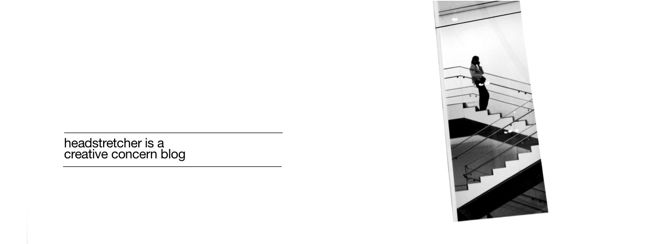We now spend more on ethical products than we do on booze and fags, according to the Co-operative Bank’s last Ethical Consumerism report.
There are organic clothes at ASDA. Virgin’s positioning is all about climate change. Coffee is fairtrade at
Starbucks, with the option of frothy soya milk. You can even buy ethical erotica - whatever that might entail - from Anita Roddick’s daughter, Sam. And here in Manchester we’ve seen
Tesco invest £25 million in a new Centre for Sustainable Consumption at the University of Manchester.
The high street, not to mention online retailers or out-of-town stores, is witnessing a seismic shift amongst shoppers. We have moved into a new era for retailing. The age of the ethical consumer has arrived.
Now none of this is news to those of us who were buying fairtrade Guatemalan body putty and veganic sausages back in the late 80s and early 90s, but this is totally mainstreamed activity now. We are witnessing a permanent change in the way that people make key purchasing decisions.
In other words, this is no consumer fad. The ground rules have changed.
So back to that market data. In 2005 the sales of ethical products in the UK for the first time exceeded the amount we spent as a nation on alcohol and tobacco, which netted £28 billion while the market for ethical goods, which reached £29 billion, up 11 per cent on the previous year. As you might imagine, within the detail of the report some fascinating trends are revealed. Ethical shareholding grew by 15 per cent over the year; we spent a quarter more on ethical clothing; our spend on green energy supplies grew by 42 per cent; and our appetite for organic food grew by 30 per cent. Remarkable growth, all in one year. In total the ethical market growth of 11 per cent was almost ten times greater than the rise in household expenditure.
It also contrasts with the annual rise in retail sales charted by the British Retail Consortium, which stood at 3.9 per cent in
March of this year.
From cars, to cashpoints, to cotton, there is an ever-growing army of consumers out there switching allegiance to products that differentiate themselves in the marketplace not through price or celebrity endorsement but simply because they do less harm.
‘Buy different’
So how should we describe this new era? I’d borrow from the ‘Think Different’ campaign run by Apple Computer in the 1990s and suggest that what we have on our hands now is the ‘Buy Different’ generation.
Buy different. They want to change the way they shop. They want to balance affordability, desirability and sustainability. They also want the full story behind the brand, warts and all. They want connection.
Buy different. They want different kinds of products that are designed from the ground up. Like the CIS Sustainable Leaders Trust investment fund, the first ever green trust to top the UK All Companies sector. Or the Dyson, or the Prius, or the Innocent Smoothie. The motto is to ‘differentiate’.
Buy different. They want to know that the companies they engage with are different in the suppliers they use and the way they catalyse positive global trade. Are you greening the supply chain? They will ask. Do you respect union rights? Are you implicated in corrupt regimes? Are children involved in manufacturing your products?
Buy different. The new consumers want products and companies that reflect who they are and what they believe in.
In fact it looks as if the
barcode - celebrating its 60th anniversary next year by the way - needs to be redesigned from black to green, and that we need to add a new set of lines and spaces to tell consumers the true cost of the products in their basket. We need to redefine the barcode, just as consumers are redefining our global patterns of consumption.
For corporations getting their head around the ‘Buy Different’ drivers covering new types of shopping and differentiated products there is still the third and most important driver: trust. You can’t sell a green product for example and expect to get away with the remaining 80 per cent of your portfolio having a poor impact on the environment or local communities. There is no place in the new retail era for tokenism, you will get rumbled. You can’t go ‘beyond petroleum’ and yet still make a fortune piping gas and oil across Kazahkstan. It won’t wash.
You can’t talk the talk without walking the walk.
The Co-operative Bank - one of Creative Concern’s clients - knows this. That’s why they’ve been publishing independently-verified sustainability reports now for almost a decade. Their reports examine in detail ecological and social responsibility, as well as performance in delivering value. The 2002 report for the Co-operative Bank was rated by the United Nations Environment Programme as the world’s best. They have won the European Sustainability Reporting Awards twice, in 2002 and 2004.
This is not a plastic bag.
As the round-the-corner queues for the celebrity-endorsed ‘This is not a plastic bag’ have shown, ethical consumerism is now a dominating force.
The rules have changed.
Ted Turner, the CEO of AOL Time Warner has gone on record as saying that in the new hyperlinked, globalised world of email, blogs and websites you could see even the largest global brands taken apart in as little as seven minutes due to an ethical slip of one sort or another.
Seven minutes, the time it would take to destroy brands built across decades.
We have entered a new era for retailing, the Buy Different generation is calling the shots. We have entered the age of the homo ethicus and there’s no turning back. Homo ethicus. A Prius-driving, American Apparel-wearing, turbine-touting new breed of consumer that will rock the retail world.














